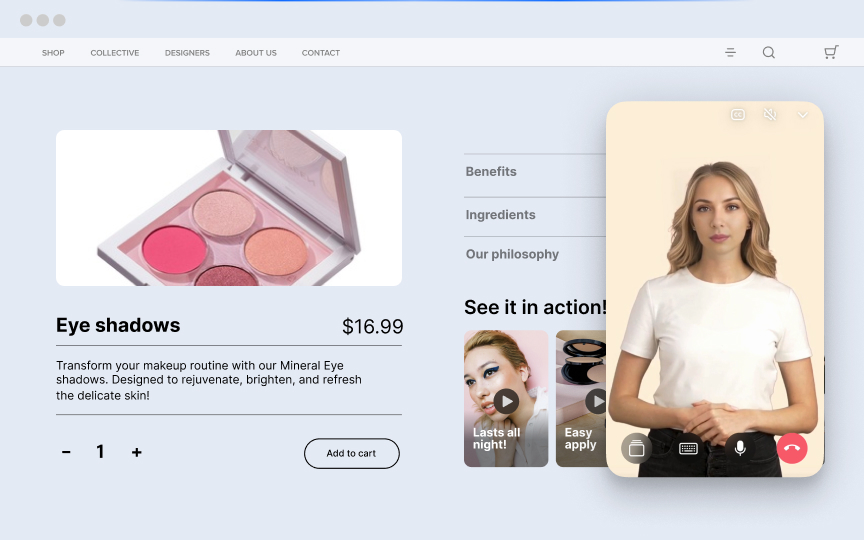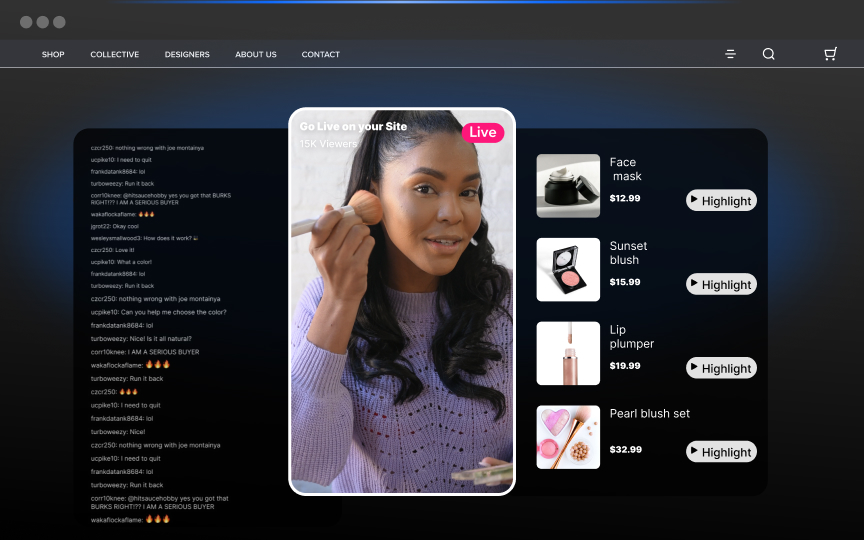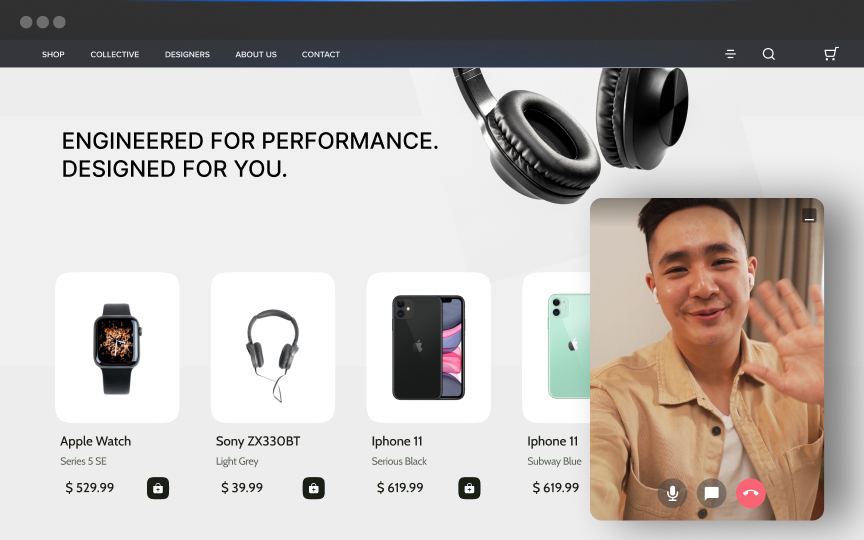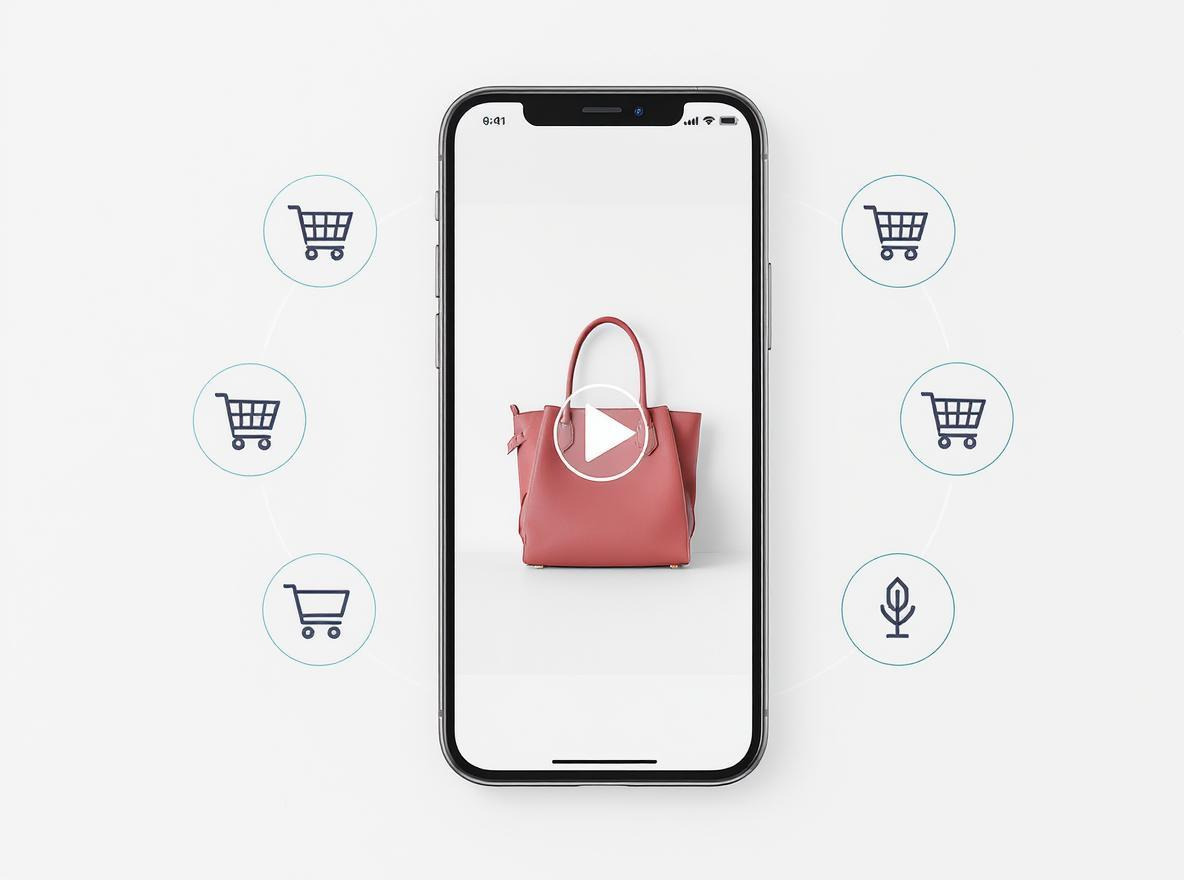During the rise of online shopping, the luxury retail sector was well behind other industries when it came to adopting ecommerce. This was primarily due to the fact that the customer experience at physical stores plays a big part in luxury purchases - something that luxury brands were not confident that ecommerce could replicate.However, the advent of video has been a game-changer. Video has been a great marketing tool for luxury brands, and it was only a matter of time before a commerce layer was added to it.Shoppable videos in particular have emerged as a darling of luxury brands. So, what is it about shoppable videos that has gotten the luxury retail sector hopping on the video commerce bandwagon, and how can video shopping platforms help you reach your goals?
Ecommerce challenges unique to luxury retailers
To be fair to luxury retailers, it is understandable why they were hesitant to embrace ecommerce in its early days. Consumers of luxury goods are used to a certain level of customer experience that would be virtually impossible to reproduce online.Some of the biggest concerns around ecommerce for luxury brands were:
Insufficient engagement opportunities
All consumers like to be engaged in order to feel “seen” by the brands. This is especially true for consumers of luxury goods and services, who are engaged at every stage of their journey.This level of engagement is easy to execute when brands have seasoned sales professionals in their stores. However, even the most sophisticated luxury brand websites have been lacking when it comes to engaging content.
Lack of a personalized experience
If a brand cannot engage with a customer, they are unable to deliver a personalized experience. In case of luxury retailers, the hyper-personalized attention customers get in-store is a critical part of the overall experience.
The lack of personalization can be a massive turn-off for luxury consumers, not to mention the poor quality of product recommendations that results from it.
No convincing, in-depth product information
Even a consumer with the deepest pockets has to be convinced to splash out the cash for luxury purchases. This is much easier to do when a customer can look, touch, and experience the product first-hand in a physical store.This means that the product information on the luxury retailer’s site has to work overtime to convince the consumer. There is only so much information that images and paragraphs of text can provide - a big reason why luxury ecommerce was slow to take off.
How shoppable video is making a difference
So, what is it about shoppable videos that have luxury brands and online retailers flocking to it?
1. Better product showcase
If a picture is worth a thousand words, then a video is worth a million. This is most certainly true when it comes to showcasing products on a website.The perceived quality of a luxury product plays a big role in the consumer’s final purchase decision. Video is the only format that does justice to any product, allowing it to be modeled and have its features explained in a manner no other formats can.
2. Turning the brand’s website into a content hub
Audiences today, especially Gen Z, expect shoppertainment, i.e. to be entertained during their online shopping experience. They are also voracious consumers of video content.
Shoppable videos combine the best of both worlds, helping turn a brand’s website not only into an ecommerce platform but also a hub of video content.
Attracting younger audiences, and cultivating a sense of brand loyalty in them, has always been very important for luxury brands. With shoppable videos, brands can truly leverage the benefits of their celebrity and influencer endorsement deals to build content that converts.
3. Going truly omnichannel
Omnichannel has been a buzzword for as long as ecommerce as a concept has existed. However, going omnichannel has been a challenge that brands and marketers have struggled with. After all, what does “omnichannel” mean to consumers?With video commerce, brands can bring their physical retail locations into play on the ecommerce front. Luxury brands spend fortunes to build up their retail stores and sales staff, aka the perfect locations and on-camera personalities for shoppable videos.Shoppable videos work well in the opposite direction too. For example, luxury brands are using QR codes in store to lead shoppers to videos where they can see a celebrity model the product, as well as order the product if it's out of stock in store or not available in their size.

4. Adding personalization back into the mix
Nothing says “luxury” more than delivering a curated experience that makes the consumer feel special. With shoppable videos, luxury brands are able to hyper-personalize the customer experience journey, from homepage to checkout.This is especially notable when it comes to product recommendations, as well as the resulting higher engagement and conversion rates. Luxury without a personalization aspect is doomed to not live up to customer expectations.
With shoppable videos luxury brands can display specific video content based on the user journey, highlighting everything from product discovery, how-to guides, user reviews, and even offer and promotions.
5. Building a first-party data pool
With third-party cookies on the verge of going the way of the dinosaurs, brands and marketers are working overtime to build up their first-party data options.For luxury retailers, having access to the right user data is essential so they can provide a hyper-personalized and targeted experience. This is where the highly engaging nature of shoppable videos shines.Everytime users engage with shoppable videos, it adds valuable information to the brand’s first-party data pool. The interactive elements within shoppable videos ensures that there is a wide variety of data that can be collected based on user behavior.
Making the most of shoppable videos
In order to truly tap into all the benefits that shoppable videos have to offer, there are a few caveats brands must keep in mind:

Get your shoppable video journey started with Firework
Firework experts work with luxury retailers and brands to create holistic video commerce strategies unique for each brand. Read how Natori, a designer brand specializing in women’s apparel and lingerie, leveraged Firework’s video shopping platform to create shoppable video and livestreaming solutions to turn their website into a content destination for shoppers.
Unlock Exclusive Insights
By submitting this form, you agree to Firework's privacy policy and consent to receive personalized marketing communications. You can unsubscribe at any time.
































